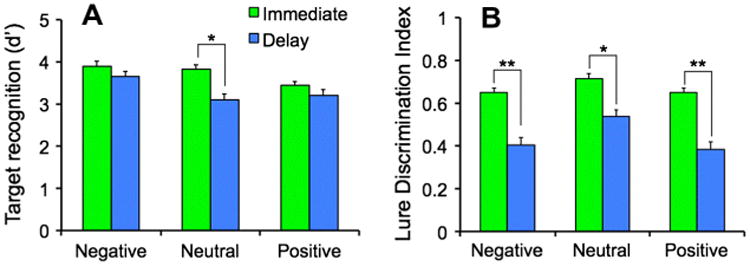Fig. 2.

Performance in immediate and 24-h delayed testing (A) Target recognition (d′) was significantly better in negative and neutral compared to positive images in the immediate condition (N = 24).Overall, d′ was worse after 24 h, however, the difference was larger in the neutral images than in the emotional images (N = 14); (B) Lure Discrimination Index (LDI) was significantly worse in negative and positive compared to neutral images in the immediate condition. LDI overall was also worse after 24 h, however, the magnitude of the difference was larger in the emotional images than the neutral images. There was a significant interaction between emotion and time of testing, which is indicated by the different significance markers (* vs. **).
